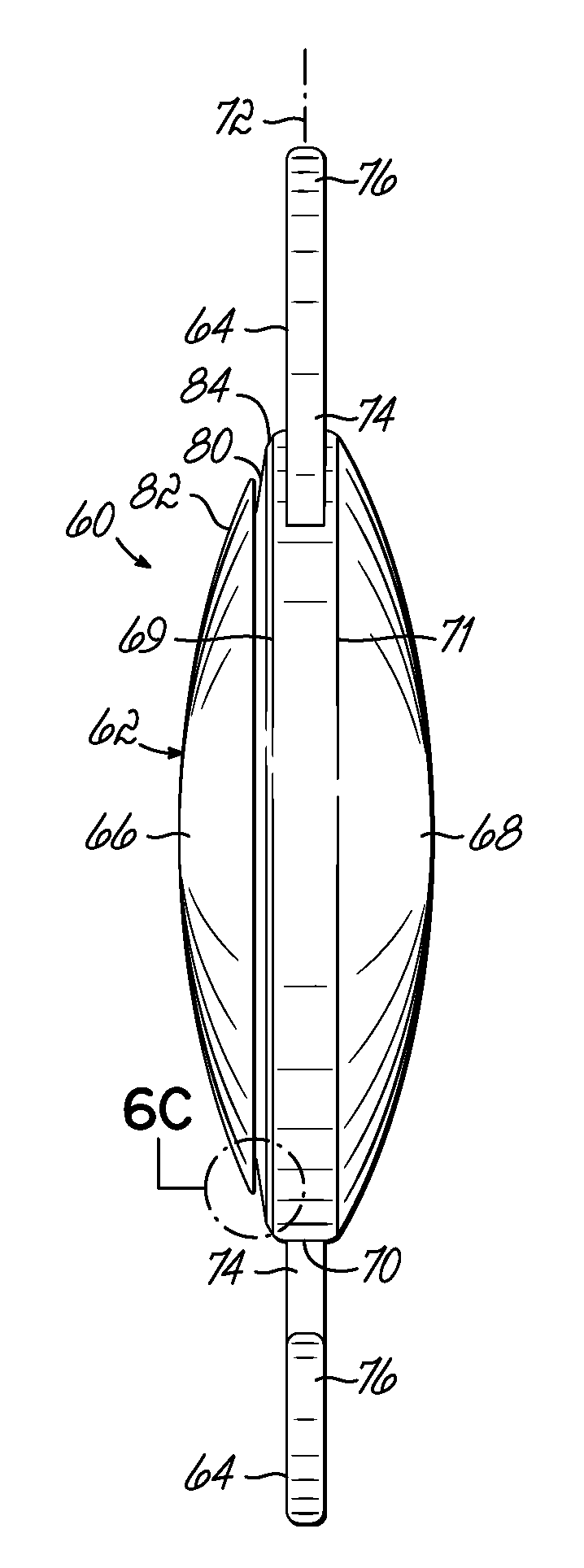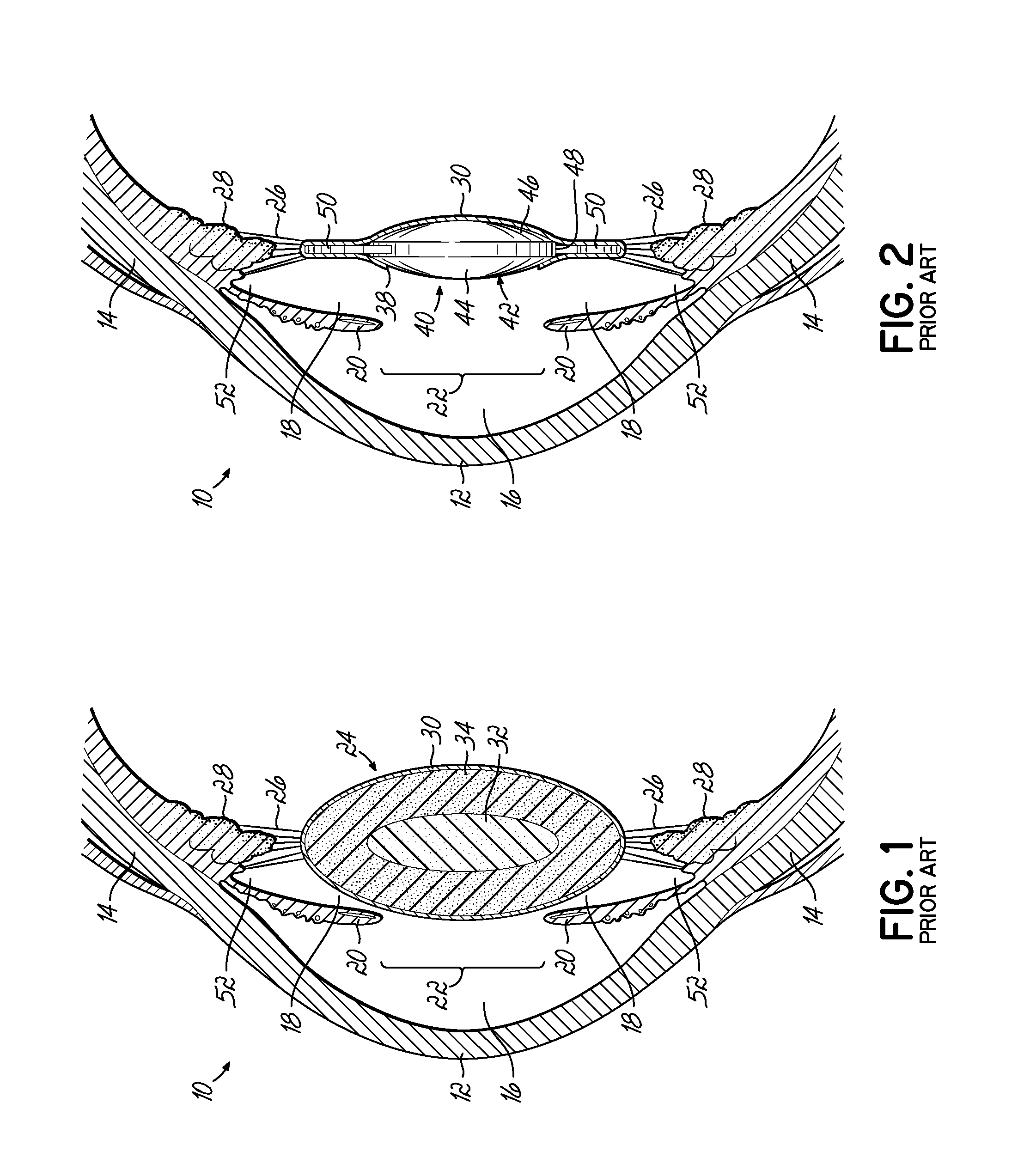Anti-dysphotopic intraocular lens and method
a technology of intraocular lens and anti-dysphotopsia, applied in the field of intraocular lens implants and surgical methods, can solve the problems of negative dysphotopsia and posterior iris chafing, and achieve the effect of reducing the occurrence of nd
- Summary
- Abstract
- Description
- Claims
- Application Information
AI Technical Summary
Benefits of technology
Problems solved by technology
Method used
Image
Examples
Embodiment Construction
[0034]Turning now to the figures, and to FIGS. 6A and 6B in particular, one embodiment of an IOL 60 in accordance with the present invention is shown. While the IOL 60 of FIGS. 6A and 6B is shown as a biconvex lens 62 having at least two diametrically opposed haptic members 64, other lens designs may also be used, including, for example, a convex-concave IOL 60a (FIG. 7A), a convex-planar IOL 60b (FIG. 7B), or other designs as desired. The biconvex lens 62 comprises a transparent structure constructed from a polymeric, silicone, acrylic, or other suitable moldable material having a refractive index similar to the native lens 24 (FIG. 1). Anterior and posterior portions 66, 68 of the biconvex lens 62 converge at a lateral, circumferential edge 70 of the IOL 60. As shown, the circumferential edge 70 may be a wall having a length of about 1 mm with an anterior edge 69 and a posterior edge 71. However, in some embodiments, the anterior and posterior portions 66, 68 may converge at a com...
PUM
 Login to View More
Login to View More Abstract
Description
Claims
Application Information
 Login to View More
Login to View More - R&D
- Intellectual Property
- Life Sciences
- Materials
- Tech Scout
- Unparalleled Data Quality
- Higher Quality Content
- 60% Fewer Hallucinations
Browse by: Latest US Patents, China's latest patents, Technical Efficacy Thesaurus, Application Domain, Technology Topic, Popular Technical Reports.
© 2025 PatSnap. All rights reserved.Legal|Privacy policy|Modern Slavery Act Transparency Statement|Sitemap|About US| Contact US: help@patsnap.com



